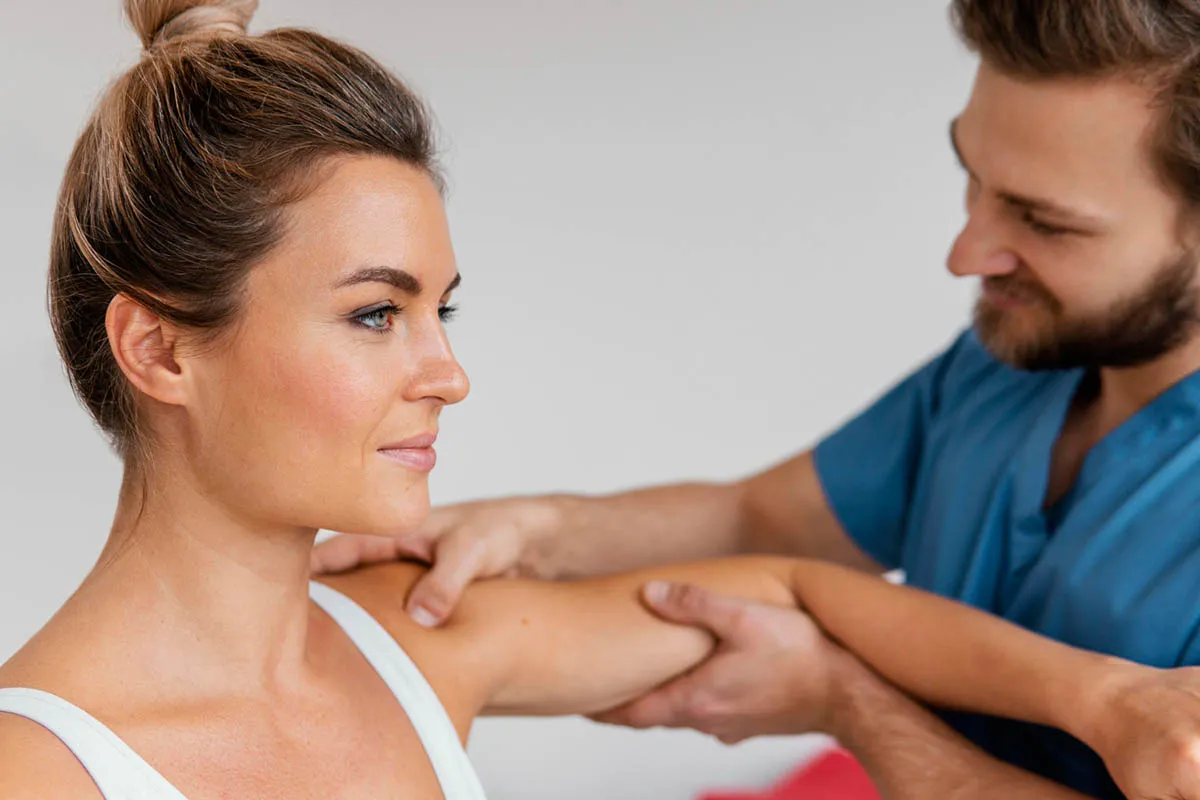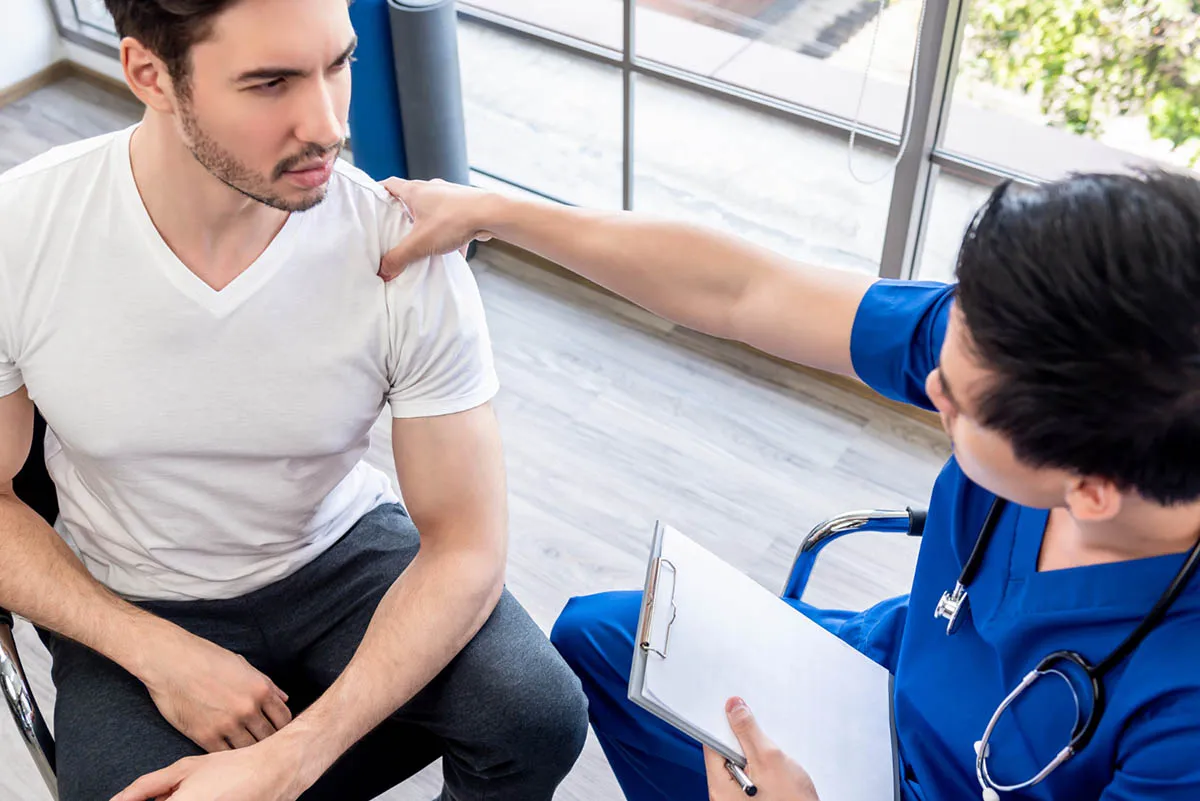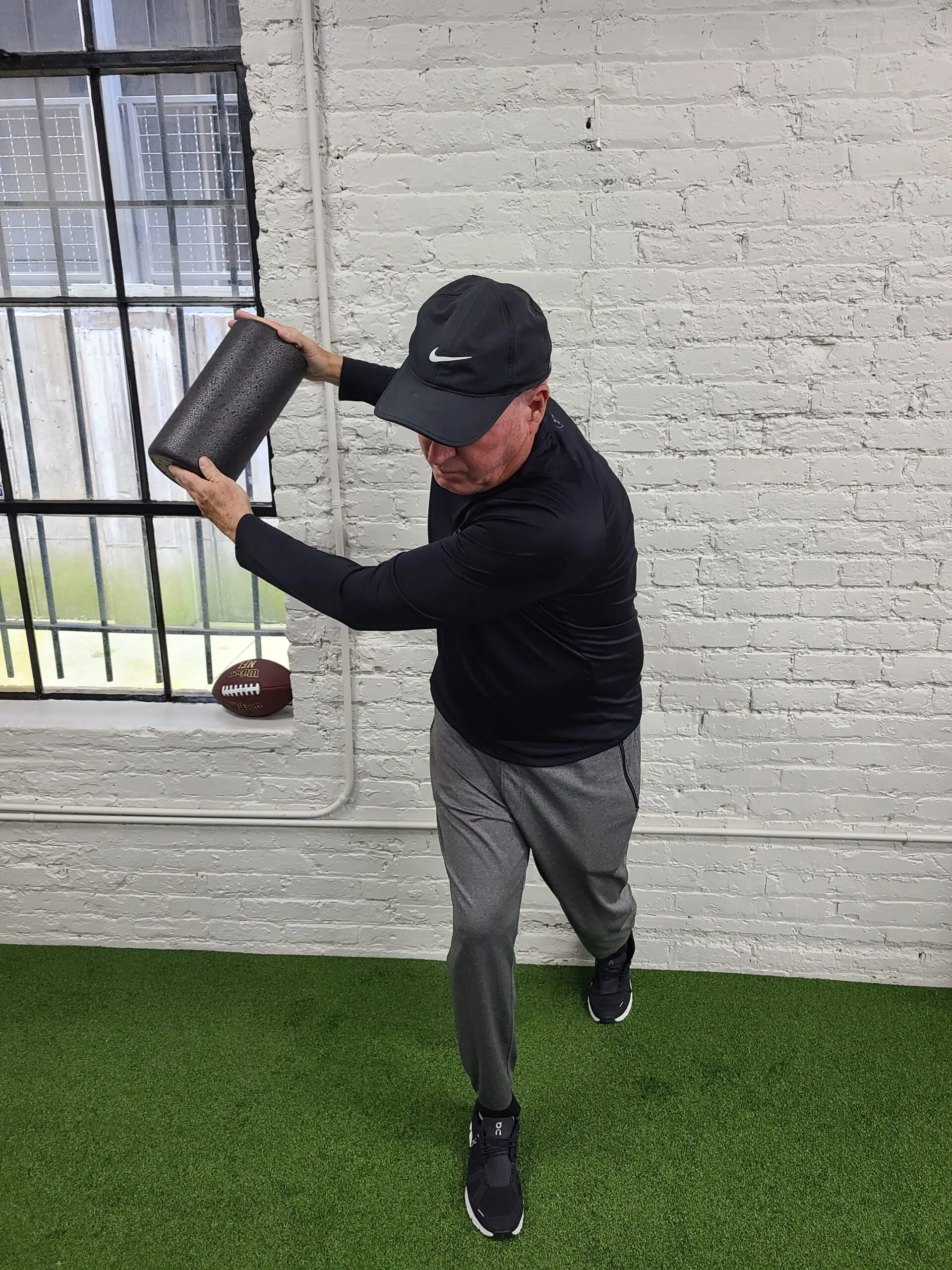Addressing Swing Faults and Building a Comprehensive Fitness Program
Written by Dr. Grant Bishop, PT DPT, TPI Certified, and Coach Shelby Holden, M.S., CSCS
Last week, we uncovered how certain swing faults could be causing you pain and affecting your golf game. Today, let’s dive deeper into addressing these issues and building a comprehensive fitness program tailored to elevate your performance on the green.
Swing Faults: The Culprits Behind Golf Pain
As discussed in our previous post, swing faults like reverse spine angle, S-posture, early extension, and hanging back can significantly impact your game and lead to discomfort. These faults often stem from mobility limitations, muscular imbalances, and poor movement patterns.
Addressing Swing Faults with Dr. Grant
Dr. Grant emphasizes the importance of addressing mobility restrictions and muscular imbalances associated with swing faults. Whether it’s limited hip internal rotation causing lower back pain or tightness in the psoas muscle contributing to S-posture, targeted assessment and personalized interventions are key. Techniques like dry needling and tailored exercises can restore mobility, alleviate pain, and enhance swing mechanics.
Building a Comprehensive Golf Fitness Program with Coach Shelby
Coach Shelby underscores the need for a holistic approach to golf fitness beyond skill enhancement. A well-rounded program should incorporate flexibility, balance, and sport-specific movements to optimize performance and prevent injury. High-load exercises, dynamic movements, and drills targeting multiple planes of motion are essential for building strength, stability, and mobility critical for the golf swing.
Moving Forward: Unlocking Your Golf Potential
By addressing swing faults and integrating a comprehensive fitness program, you can unlock your golf potential and elevate your game to new heights. Stay tuned for our next post, where we’ll delve deeper into designing a golf-specific fitness regimen tailored to optimize your performance on the green.
Are you ready to take your golf game to the next level?
- Schedule an assessment with us to address swing faults and develop a personalized fitness program tailored to your needs.
- Don’t forget to check out our GOLF HOME ASSESSMENT to gauge your mobility and identify areas for improvement.
Let’s work together to enhance your game, alleviate pain, and unlock your full golfing potential!

The advantages of engaging in physical therapy after rotator cuff surgery are multifaceted. Not only does it aid in pain management and improve range of motion, but it also plays a critical role in the recovery process for those with rotator cuff injuries. A comprehensive study has indicated that conservative treatments, notably rotator cuff physical therapy exercises, are successful in 73 to 80% of patients suffering from a full-thickness rotator cuff tear. This efficacy highlights physical therapy as a cornerstone in the rehabilitation of rotator cuff repairs.
Physical therapy after rotator cuff surgery offers a spectrum of benefits, including:
- Pain Management: Employs techniques such as ice application and manual therapy to control pain effectively.
Improved Range of Motion: Utilizes passive range of motion exercises initially, progressing to active range exercises to increase the shoulder’s flexibility. - Increased Strength: Strength training exercises focus on rebuilding muscle strength, particularly in the supraspinatus tendon and posterior rotator cuff, which are crucial for shoulder movements.
- Enhanced Coordination: Aids in retraining the shoulder muscles to function in harmony, essential for performing functional activities smoothly.
- Prevention of Blood Clots: Promotes circulation through movement and specific exercises, reducing the risk of blood clots.
- Regaining Stability: Stability exercises aim at restoring the integrity of the shoulder complex, vital for preventing re-injury.
When to Start Physical Therapy After Rotator Cuff Surgery?
Understanding when to start physical therapy after rotator cuff surgery is crucial for a successful recovery. Typically, when do you start physical therapy after rotator cuff surgery depends on the doctor’s advice, but it’s often recommended to begin within a few days to a week after the operation. Initiating physical therapy post-rotator cuff surgery should be timed carefully, often beginning within a few days to a week following the procedure.
The initial phases focus on passive motion to maintain joint mobility without exerting strain on the healing tissues. As the rehabilitation process progresses, active movement exercises are introduced based on the patient’s recovery pace. Adherence to the treatment plan outlined by the surgeon and physical therapist is critical, ensuring the therapy aligns with the shoulder’s healing stages.
How Long Do You Need Physical Therapy After Rotator Cuff Surgery?
Patients often ask, how long do you need physical therapy after rotator cuff surgery? The answer varies, with programs typically extending from several months up to a year, depending on individual progress and the extent of the surgery. The therapy’s nature changes as the patient progresses, moving from pain and swelling reduction to focusing on muscle strength, and flexibility, and returning to regular activities. The exact timeline is personalized, depending on the surgical techniques used—such as arthroscopic repair or mini-open repair—the individual’s health status, and their specific recovery goals.
What to Expect During Physical Therapy Sessions?
During physical therapy sessions for rotator cuff surgery recovery, patients can expect:
- Initial Assessment: An evaluation of the shoulder’s condition, focusing on pain levels, range of motion, and muscle atrophy.
- Pain Management: Techniques including ice, heat therapy, or ultrasound may be utilized to manage post-surgery pain.
- Passive Exercises: Early sessions will likely involve exercises where the therapist assists in moving the arm, promoting a passive range of motion.
- Active Exercises: Gradually, patients will perform exercises independently, enhancing active motion and muscle strength.
- Strength Training: Targets the muscles around the shoulder, particularly those affected by surgical repairs, to facilitate shoulder strength and function.
- Education: Guidance on protecting the shoulder during the healing process, including dos and don’ts to ensure successful rotator cuff surgery recovery.
Physical Therapy Exercises for Rotator Cuff Rehabilitation

Effective rehabilitation from rotator cuff surgery incorporates a variety of exercises, each tailored to the phase of recovery:
Pendulum Swings
Support yourself with one hand, allowing the operated arm to dangle. Swing the arm gently in circles and side to side, promoting passive motion and reducing stiffness.
Shoulder Blade Squeezes
This exercise encourages the retraction and protraction of the scapula, essential for shoulder stability and reducing the risk of scapular dyskinesis.
External Rotation
Using a light resistance band, this exercise strengthens the posterior rotator cuff by rotating the forearm away from the body while keeping the elbow at a 90-degree angle and close to the side.
Internal Rotation
The counterpart to external rotation, internal rotation exercises focus on the anterior aspect of the rotator cuff, improving muscle strength and facilitating daily activities.
Wall Walks
Facing a wall, patients “walk” their fingers upward, gradually improving the active range of motion and addressing muscle guarding.
Arm Raises
Gradual lifting of the arm, both to the front and to the side, enhances shoulder strength and mobility, essential for the recovery of functional activities.
Cross-Body Reach
Stretching the shoulder by reaching across the body helps in regaining flexibility and reducing post-operative stiffness.
Scapular Retraction/Protraction with Resistance Bands
Strengthens the shoulder blades and improves coordination within the shoulder complex, vital for the effective movement of the upper arm bone.
Tips for Successful Physical Therapy After Rotator Cuff Surgery
To ensure the best outcomes from physical therapy following rotator cuff repairs, consider the following tips:
- Follow the Physical Therapy Stages: Adhering to the rehabilitation plan through its various stages—from passive motion to functional strengthening—is key.
- Work in Partnership with Your Physical Therapist: Maintaining open communication about pain levels and progress can adjust the treatment plan as needed for optimal recovery.
- Perform Only Recommended Movements: To prevent re-injury, engage only in movements and exercises approved by your therapist.
Improve Range of Motion and - Circulation: Regularly performing prescribed exercises enhances flexibility and blood flow, crucial for rotator cuff healing.
- Reduce Swelling, Stiffness, and Pain: Applying ice, engaging in gentle movements, and following medical advice for pain management help in managing post-surgery symptoms.
- Minimize Scarring: Specific treatments and exercises can reduce scar tissue formation, ensuring smoother shoulder movement.
- Use an Ice Pack: Ice application is recommended to manage pain and swelling, particularly after engaging in the exercise program.
- Take Medication as Directed: Proper use of medications as per surgical advice aids in controlling inflammation and pain during the recovery phase.
Conclusion
Physical therapy plays an indispensable role in the recovery from rotator cuff surgery, offering a pathway to restore shoulder function, strength, and flexibility. By closely following a well-structured physical therapy program, patients can significantly enhance their recovery outcomes, returning to their daily, moderate, and recreational activities with a stronger, more resilient shoulder.
At Change the Game Performance Therapy, we’re committed to revolutionizing your recovery journey, especially after undergoing significant procedures like rotator cuff surgery. We understand the intricacies of post-surgical physical therapy and are dedicated to providing tailored, evidence-based treatments that ensure you regain your strength, flexibility, and function more effectively.
With a focus on personalized care, our expert team leverages the latest techniques and a patient-centered approach to help you achieve optimal recovery. Choose Change the Game PT for a rehabilitation experience that truly makes a difference, guiding you back to your best self and beyond, with confidence and efficiency.
FAQs
How important is physical therapy after rotator cuff surgery?
Physical therapy is crucial for ensuring the successful healing of the rotator cuff repairs, managing pain, preventing stiffness, and regaining full shoulder function.
What happens if I don’t do physical therapy after rotator cuff surgery?
Neglecting physical therapy can lead to severe complications, including limited shoulder mobility, increased pain, muscle atrophy, and a significant decrease in the quality of life due to the inability to perform regular activities.
How many months of physical therapy after rotator cuff surgery?
The typical duration ranges from a few months to over a year, depending on factors like the type of surgical treatment (arthroscopic repair vs. mini-open repair), the patient’s overall health, and the specific goals of the rehabilitation program.


